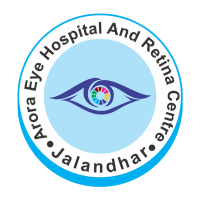
Among the healthcare concerns in India, the rising prevalence of
diabetes is a key source of concern. Among its complications, diabetic
retinopathy is a serious threat to vision. However, with the introduction of
Artificial Intelligence (AI), there is renewed promise for revolutionising
diabetes patient screening and averting blindness. In this blog post, we will
discuss how AI technologies can play a significant role in the early detection and management of diabetic retinopathy, hence protecting vision across India.
Diabetes cases are increasing alarmingly in India, owing to urbanisation, sedentary lifestyles, and genetic predisposition. With approximately 77 million diabetic individuals, India is one of the world’s top countries for diabetes prevalence. This epidemic not only stresses healthcare systems, but it also increases the risk of diabetic complications such as diabetic retinopathy, which can result in irreversible blindness if left untreated.
AI holds huge potential for revolutionising the provision of healthcare, particularly in resource-constrained environments such as the Indian subcontinent. In the field of diabetic retinopathy screening, AI-powered technologies provide a revolutionary way to improving early identification and care, thereby preventing visual loss. Here is how artificial intelligence can make a difference:
1. Automated Retinal Imaging:
2. Teleophthalmology Services
3. Decision Support Systems
4. Population Health Analytics
5. Continuous Monitoring and Feedback
1. Automated Retinal Imaging: AI algorithms can analyse retinal pictures
obtained using non-invasive imaging techniques like fundus photography or optical coherence tomography (OCT). These algorithms accurately recognise indications of diabetic retinopathy, such as microaneurysms, haemorrhages, and exudates. Automated retinal imaging combined with AI interpretation accelerates the screening process, allowing for prompt treatments.
2. Teleophthalmology Services: In areas with limited access to specialised healthcare facilities, AI-powered teleophthalmology enables remote screening of diabetic patients for retinal problems. Patients can upload retinal photos taken using smartphone fundus cameras via digital channels. AI algorithms analyse these photos and offer real-time input, allowing healthcare providers to prioritise patients based on urgency
3. Decision Support Systems: AI-based decision support systems help healthcare practitioners diagnose and manage diabetic retinopathy. These systems create personalised therapy suggestions by combining
patient data including medical history, glycaemic control, and retinal imaging results. This improves clinical decision-making, guarantees consistent care delivery, and maximises resource utilisation.
4. Population Health analytics: AI algorithms analyse huge numbers of health data to identify high-risk diabetic groups and geographic locations prone to diabetic retinopathy prevalence. This population health strategy enables focused interventions including community outreach programmes, diabetic eye screening camps, and public health campaigns. Healthcare authorities can use predictive analytics to distribute resources efficiently and adopt preventive measures proactively.
5. Continuous Monitoring and Feedback: AI-powered wearable devices with retinal scanning capabilities provide continuous monitoring of diabetes patients’ ocular health. These gadgets detect small changes in retinal morphology that indicate diabetic retinopathy development. Real-time feedback alerts patients and healthcare practitioners, allowing for
appropriate actions to prevent vision-threatening problems.
Conclusion: In the fight against diabetic retinopathy and blindness, artificial intelligence has emerged as a strong ally, altering the landscape of diabetes patient screening and management in the Indian subcontinent. By using the power of AI-driven technology, healthcare stakeholders can break down traditional barriers, democratise access to quality eye care, and protect millions of diabetics’ vision. As we move towards a future in which AI combines with healthcare innovation, the promise of avoiding blindness and altering lives across the Indian subcontinent appears more promising than ever.


